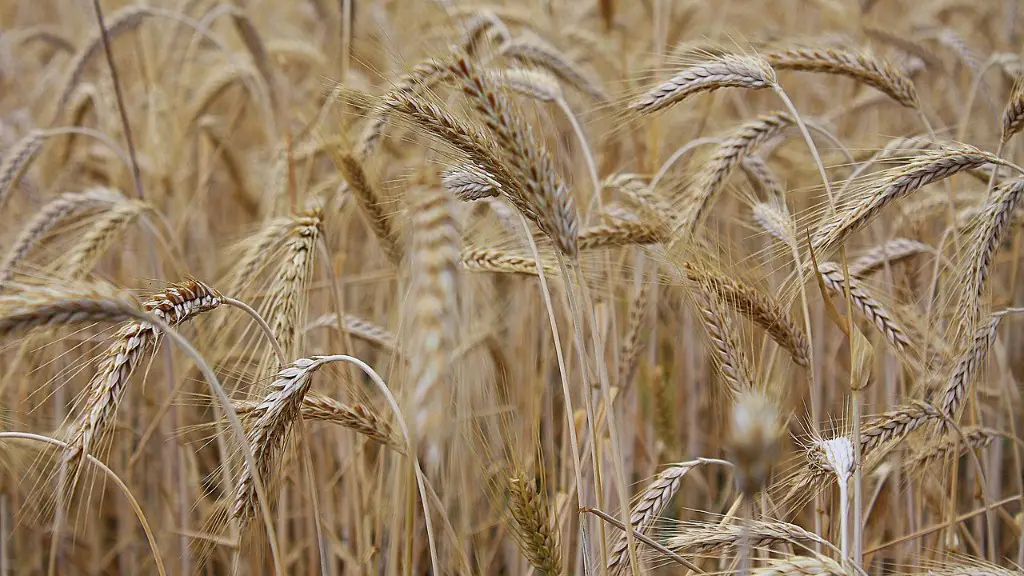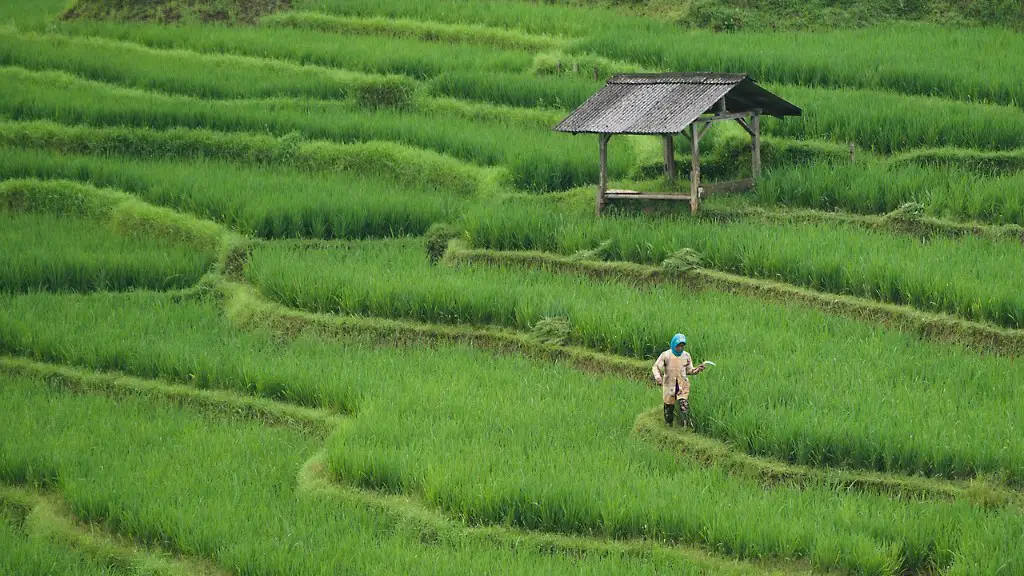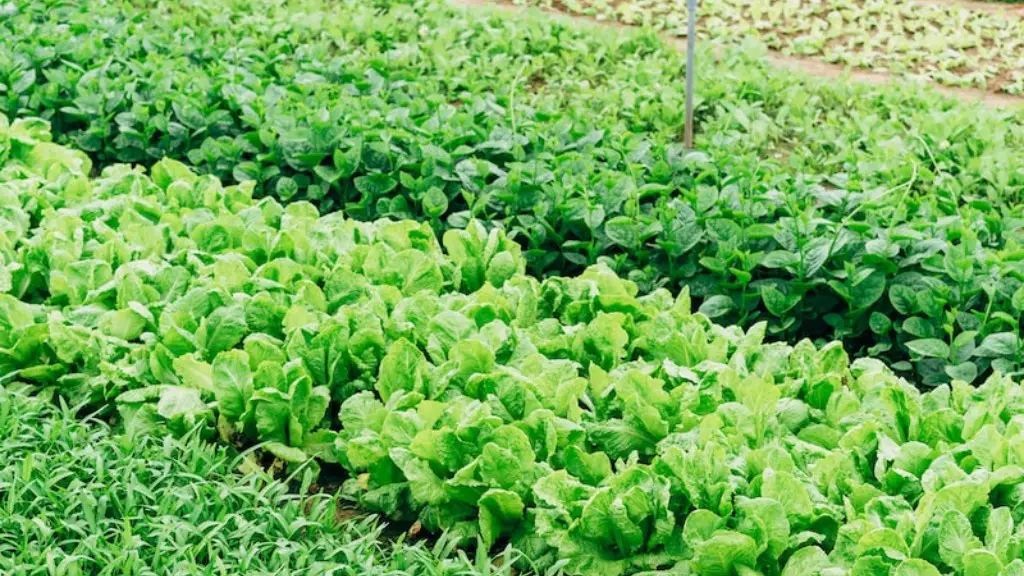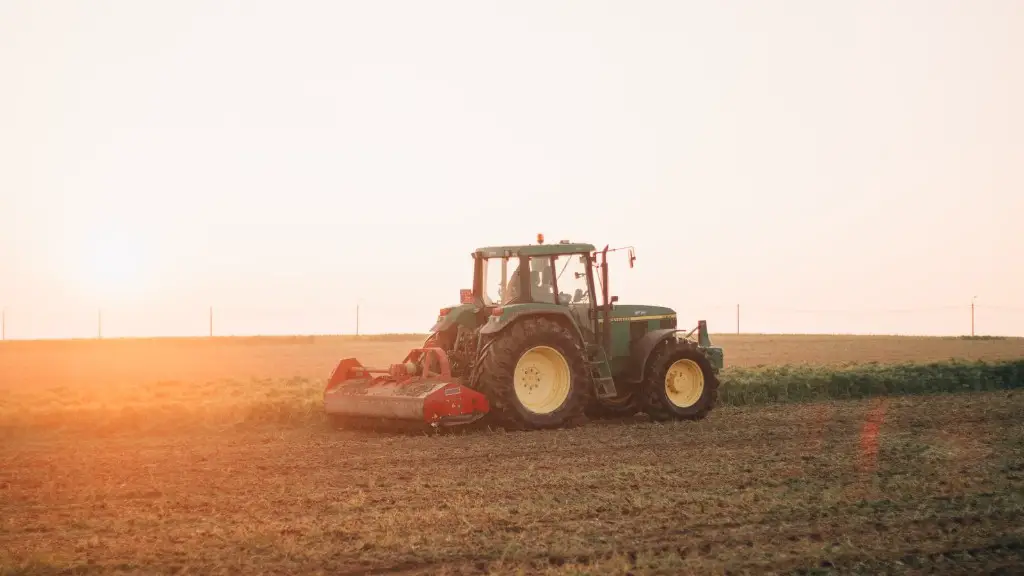Agriculture in the Middle East is limited by a number of factors, including climate, water availability, and soil conditions. The average rainfall in the region is low, and much of the land is arid or semi-arid. This makes it difficult to grow crops, and even when crops can be grown, they are often of poor quality. In addition, water availability is often a limiting factor, as many countries in the region do not have enough fresh water to support large-scale agriculture. Finally, the soil in much of the Middle East is poor in nutrients, making it difficult to grow healthy crops.
The Middle East region is one of the driest on Earth. Less than 10 percent of the region’s land is arable, and irrigation is necessary to farm most of that. The lack of fresh water resources – especially surface water – is the main reason why agriculture is limited in the Middle East.
Other reasons for the limited agricultural production in the region include: a high percentage of sandy soils, which are not ideal for farming; the sparse population, which results in a small labor force; and political instability in many countries.
Why is farming difficult in the Middle East?
The Middle East region is largely dependent on imports to meet the population’s food needs. Extreme weather conditions, arid climate, and unavailability of natural resources make agriculture production difficult in the region.
The agriculture and food sector in the region is limited by arable land, water scarcity, and other resource and environmental constraints. The region has coped with population growth and urbanization by importing food.
How is the agriculture in the Middle East
Rainfed crops are grown during the wetter winter period, while irrigated areas are cultivated year round. The main rainfed crops are wheat, barley, legumes, olives, grapes, fruit and vegetables. A wide range of subtropical crops, including fruit and vegetables, is also grown under irrigation in the summer months.
Climate: The climate of an area greatly affects its potential for agricultural production. Areas with long growing seasons and ample rainfall are generally more conducive to agriculture than those with shorter growing seasons and limited rainfall.
Water Resources: The availability of water is another critical factor affecting agricultural production. Irrigation can greatly increase the amount of land that is suitable for agriculture, but it requires a reliable water source.
Terrain: The relief of an area—that is, its elevation, slope, and soils—also affects its potential for agriculture. Flat land is generally easier to farm than mountainous land, and land with deep, fertile soils is more productive than land with shallow, sandy soils.
Erosion: Erosion is a natural process that can degrade the quality of land and reduce its productivity. Erosion can be caused by water, wind, or tillage (the process of preparing land for planting).
What are 3 common economic problems in the Middle East?
The MENA countries continue to face numerous long-term socio-economic and institutional challenges. These challenges include high unemployment (especially youth unemployment), low female labour-market participation rates, the poor quality of education, costly and ineffective public sectors, high military and security spending, and high energy costs. While these challenges are significant, the countries of the MENA region have made some progress in recent years in addressing them. For example, many countries have implemented reforms to improve the quality of education and to increase female labour-market participation. However, much more needs to be done in order to fully address the challenges facing the MENA region.
There is a growing demand for farm products, but many farmers don’t have the resources to meet that demand. This is due to past financial hardships, lack of qualified labor, or poor yield from recent crops. Farmers are struggling to provide the harvest expected and needed to be successful. This is a serious problem that needs to be addressed.
Which resource is very limited in the Middle East?
The MENA region is facing a water crisis due to increasing population pressures and limited resources. The region must focus on increasing its water supply and efficiency to meet the needs of its people.
Water scarcity is a huge problem in the Middle East, with 12 of the world’s 17 most “water stressed countries” located in the region, according to the World Resources Institute. This is due to a combination of factors including climate change, population growth, and unsustainable water use. As a result, many people in the Middle East do not have access to clean, safe water for drinking, bathing, and irrigation. This has devastating consequences for both human health and economic development.
What are the three key challenges facing agriculture
Setting the table to address the triple challenge means creating a plan that considers all three challenges simultaneously. This is necessary because each challenge is interconnected with the others. For example, protecting the environment is essential for ensuring a stable food supply, but farms also need to be profitable in order to be sustainable.
A holistic approach that takes all three challenges into account is the only way to create a sustainable future for our planet.
In the Middle East, water scarcity is a major issue that limits the ability to grow food crops. With limited availability of arable land and water resources, it is difficult to produce enough food to meet the needs of the growing population. This problem is compounded by the fact that production expansion is slow and population growth is high. As a result, food insecurity is a major concern in the region.
Is most of the Middle East is well suited to agriculture?
The Middle East is a region with a diverse collection of countries and cultures, and as such, the agricultural practices and products vary considerably across the region. However, in general, the Middle East is well suited to agriculture, with a long growing season and ample water resources. The fertile Crescent, in particular, is an important agricultural area, producing a variety of crops such as wheat, barley, and rice. The desert regions of Egypt are also North Africa’s most important agricultural centers, producing key crops such as maize and cotton.
There are a few different options that must be considered in order to improve agriculture in the Middle East. One option is to attract more skilled workers to the agricultural sector. Another option is to improve the use of farm machinery. Another option is to upgrade the use of fertilizers and herbicides.
What are the reasons for decline in the size of agriculture
The primary causes of the predicament facing agriculture are population pressure, unprofitable holdings, uncertain monsoons, poor irrigation infrastructure, and soil fertility decline. Agricultural support services are insufficient, and there is poor resource management and a lack of initiative. These factors combine to create a situation in which farmers are struggling to make ends meet.
In order to address the challenges facing agriculture, it is essential to invest in improving infrastructure and support services. Additionally, initiatives that improve resource management and increase farmers’ incomes are needed. With these measures in place, agriculture can once again become a thriving sector in India.
In the case of a struggling crop, the major limiting factors are:
1. Weather Stress: Unfavourable weather conditions can lead to crop stress and reduced yields. For example, excessive heat or cold, drought, and floods can all adversely affect crop growth and development.
2. Pest Pressures: Pests and diseases can also cause crop stress and lead to reduced yields. For example, fungal diseases can affect the root system of a crop, while insect pests can damage the leaves and stems.
3. Soil Characteristics: Soil characteristics can also play a role in crop stress and reduced yields. For example, poor drainage or high levels of salinity can both adversely affect crop growth.
4. Crop Management Practices: Poor crop management practices can also lead to crop stress and reduced yields. For example, inadequate irrigation or fertilization can both stressed plants and reduce yields.
What are 4 factors that limit crop production?
The four most important factors that influence crop yield are soil fertility, availability of water, climate, and diseases or pests. These factors can pose a significant risk to farms when they are not monitored and managed correctly.
Soil fertility is important for crops because it provides the nutrients that they need to grow. The availability of water is also important because crops need water to survive. Climate is important because it can impact the growth of crops. Finally, diseases and pests can impact crop yield because they can damage crops and make them less productive.
The Middle East faces several major challenges in 2022, such as the fight against climate change and energy transition, as well as unfinished business such as democratisation and human rights, which remain unrespected in most Arab countries, where there has been limited progress since the 2011 uprisings, while economic growth has been disappointing. In order to meet these challenges, it is essential that the international community continue to support the region through financial assistance, technical assistance and capacity building.
What is the biggest conflict in the Middle East
The current conflicts in the Middle East are mainly centered around the Israeli-Palestinian conflict, which has been ongoing for many years. However, there are also other long-term conflict zones in the region, such as Afghanistan, the Caucasus, the Horn of Africa, and Sudan. In addition, the region is home to two of the wars with the most international participants: Iraq in 1991 and 2003.
There is no single definition for a “developed” country, but most people would agree that development includes factors like a high standard of living, a well-educated population, and a healthy environment.
While a high per capita income is often used as a proxy for development, it is not the only factor to consider. For example, the gap between the rich and poor in many Middle Eastern countries is quite high, indicating that the benefits of economic growth are not being evenly shared. This can lead to social and political instability, which can in turn hinder further development.
So while a high per capita income is certainly a positive sign, it is not the only thing to consider when determining whether a country is developed or not.
Conclusion
The primary reason why agriculture is limited in the Middle East is due to the lack of water resources. Although there are some oasis and rivers in the region, the majority of the land is dry and arid. This means that crops cannot be grown without irrigation, which is often not possible or too expensive for small-scale farmers. Additionally, the high temperatures in the region can also lead to droughts, which further limits agriculture production.
There are many reasons why agriculture is limited in the Middle East. One reason is that the climate is not conducive to farming. The region is dry and experiences little rainfall, making it difficult to grow crops. Additionally, much of the land is barren or desert. And, because the Middle East is located in a politically unstable part of the world, it can be difficult to get supplies and equipment into the region.




